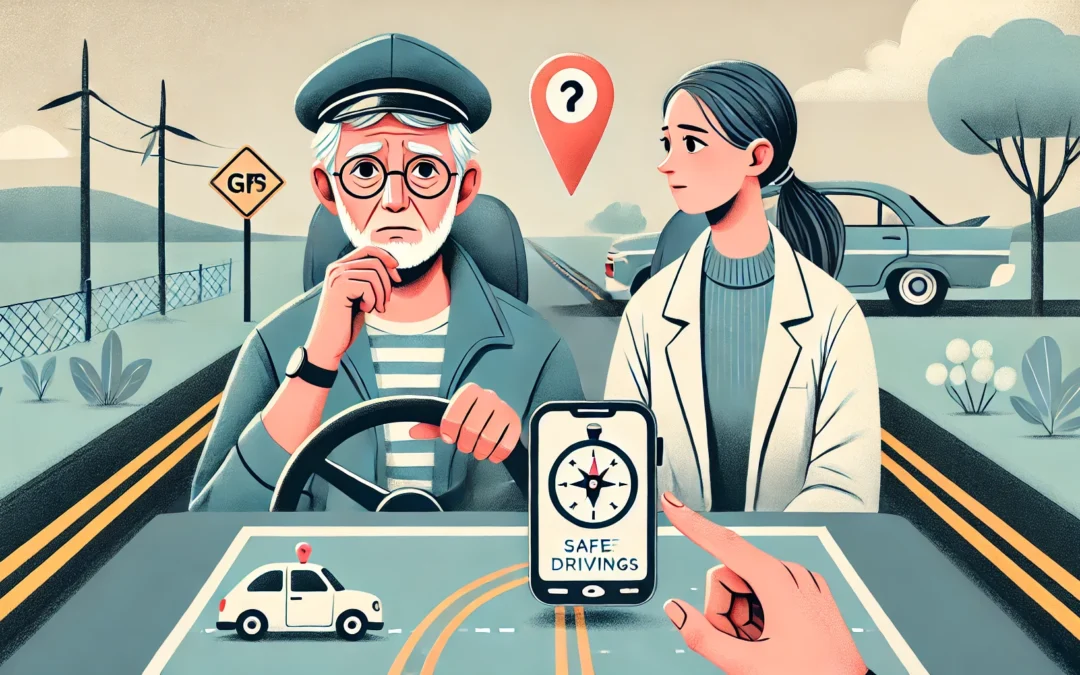Cognitive Impairment and Safe Driving: What You Should Know
Cognitive impairments, such as memory loss, reduced attention span, or slower reaction times, can significantly affect a person’s ability to drive safely. As drivers age or experience medical conditions that affect brain function, it’s crucial to assess how these changes impact their driving abilities. Here’s how cognitive impairment can affect driving and the steps that can be taken to stay safe on the road.
1. Understanding Cognitive Impairment
Cognitive impairment refers to changes in the brain that reduce a person’s ability to think, reason, or remember. This can be caused by:
- Aging: Cognitive abilities naturally decline with age, affecting memory, judgment, and the ability to focus.
- Medical conditions: Diseases like Alzheimer’s, dementia, or stroke can severely impair cognitive function, making it difficult to drive safely.
- Medications: Certain medications can cause drowsiness, confusion, or slowed reaction times, further affecting cognitive function .
Driving requires constant decision-making and quick reflexes, both of which can be compromised by cognitive impairment.
2. Signs That Cognitive Impairment May Be Affecting Driving
Family members and loved ones often notice signs that someone’s driving ability may be compromised due to cognitive changes. These signs include:
- Getting lost on familiar routes: One of the early signs of cognitive impairment is difficulty navigating areas that were once familiar.
- Slower reaction times: Drivers may take longer to react to traffic signals or road hazards.
- Confusion with traffic rules: Forgetting basic road rules or becoming easily confused in traffic is a major red flag.
- Frequent close calls or minor accidents: These can be signs that the driver is struggling to maintain control of their vehicle.
If any of these signs are present, it’s important to evaluate whether it’s still safe for the individual to drive.
3. Evaluating Driving Ability
Drivers with cognitive impairment can still drive safely in many cases, but it’s essential to take steps to evaluate their abilities:
- Medical evaluation: A doctor can assess the extent of cognitive impairment and recommend whether driving is still safe.
- Reexamination by the DMV: The California DMV can require a reexamination of a driver’s skills if cognitive impairment is suspected. This may include a written test, vision test, or a driving test to determine if the individual can still drive safely.
- Self-assessment: Some drivers may choose to self-assess by taking online cognitive tests or consulting with a driving instructor to determine if they need to limit their driving or stop altogether.
By regularly assessing cognitive abilities, individuals can make informed decisions about whether they are still fit to drive.
4. Making Adjustments for Safer Driving
If a driver is experiencing mild cognitive impairment but still wishes to drive, there are adjustments that can help:
- Limit driving to daylight hours: Cognitive function can be worse at night, so driving during the day when visibility is better can help.
- Avoid complex routes: Sticking to familiar, less congested roads can make driving easier and less stressful.
- Take breaks: Longer driving trips may increase confusion or fatigue. Taking frequent breaks can help maintain focus.
Modifying driving habits based on cognitive limitations can extend safe driving for longer periods.
5. Knowing When to Stop Driving
At some point, it may no longer be safe to continue driving, especially as cognitive impairment progresses. It’s important to recognize when it’s time to stop:
- Increased anxiety while driving: If the driver feels more stressed, confused, or anxious behind the wheel, it may be time to consider alternatives to driving.
- Concerns from family or friends: Loved ones often notice cognitive decline before the driver does. Listening to their concerns can help prevent accidents.
- Multiple accidents or near-misses: When driving becomes dangerous for the driver and others on the road, stopping is the responsible choice.
Transitioning from driving to using alternative transportation options can be difficult, but it’s a necessary step to ensure safety.






Recent Comments